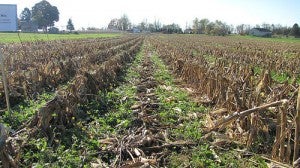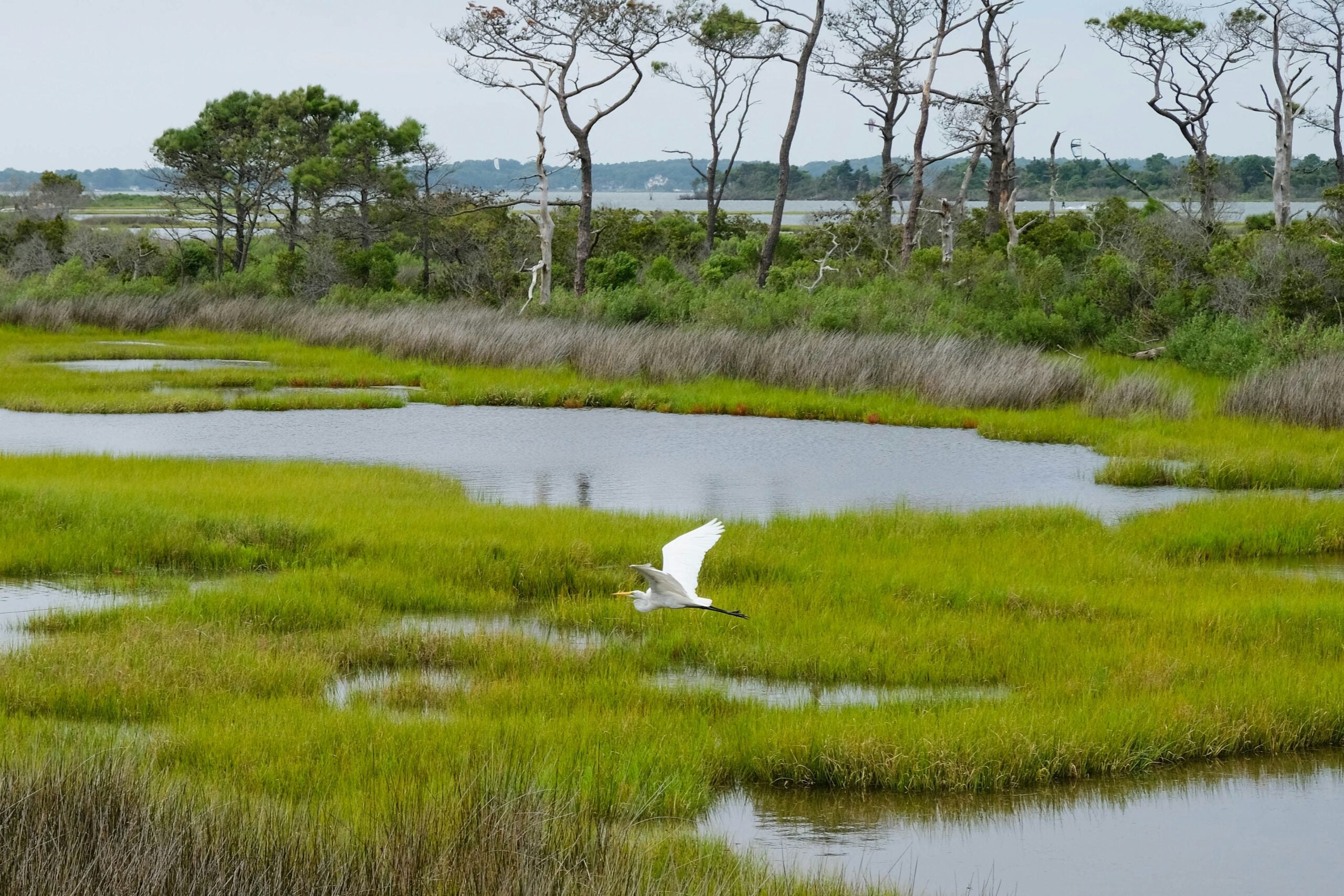Following the Sackett v. EPA Supreme Court decision in May 2023, millions of acres of wetlands across the U.S. lost critical federal protections they once had under the Clean Water Act. The affected wetlands – which include those that do not have a continuous surface water connection to another federally protected body of water, like streams, lakes or an ocean – are now potentially at risk of loss and degradation. Also at risk could be the multitude of benefits provided by wetlands, which support clean drinking water, habitat for fish and wildlife, human health and well-being, contribute to economic activity and reduce damages from flooding.
Growing Returns
Selected tag(s): wetland
Our Nation’s wetlands are at risk. So is our ability to manage flooding.
North Carolina’s coastal wetlands and marshlands are a critical lifeforce for hunters and anglers
This op-ed was originally published in The Coastland Times.
Last week as Hurricane Lee tracked northward through the Atlantic, North Carolina’s coastal areas saw coastal flooding and beach erosion from storm surge and powerful 17-foot waves. At Cape Hatteras, the storm’s erosion uncovered a buried fence from the 1800s. Elsewhere, roads and neighborhoods experienced flooding. Those effects were felt despite Lee being more than 300 miles off our coast. We were fortunate the monster storm didn’t come any closer to our shores. These tropical systems, along with Nor’easters and other more frequent storm events take a toll on residents, business owners, and our state’s natural resources, including important fish and wildlife habitat.
As we mark National Hunting and Fishing Day, it’s worth taking stock of how increasingly intense and more frequent severe weather events are impacting our marshlands, wetlands, and sounds, which in turn directly – and adversely – affects our coastal communities and our hunting, fishing and outdoor recreational history and traditions. Read More
On this International Day for Disaster Risk Reduction, protecting the Nation’s wetlands is more important and urgent than ever
By: Ivy Steinberg McElroy, EDF’s Climate Resilient Coasts & Watersheds Intern
The International Day for Disaster Risk Reduction was established by the United Nations General Assembly to accelerate action to strengthen disaster resilience. In the United States, this day comes on the heels of a major blow to our Nation’s wetlands. Earlier this year, the U.S. Supreme Court ruled in Sackett v. Environmental Protection Agency (EPA) to narrow the scope of protections for wetlands, as defined in the Clean Water Act. As result, this landmark decision could cause detrimental impacts to the environment, communities and economy. That means more flooding – especially for more vulnerable communities downstream. Read More
How nature can protect farmers against droughts and floods
 Wacky weather isn’t just a fluke. According to the National Climate Assessment (NCA), extreme weather events are becoming more common and are likely to increase in the future, which poses challenges for farmers and communities.
Wacky weather isn’t just a fluke. According to the National Climate Assessment (NCA), extreme weather events are becoming more common and are likely to increase in the future, which poses challenges for farmers and communities.
Traditional ways of responding to weather crises, such as building higher flood walls and digging deeper wells are expensive and often fail.
The good news is that farmers are increasingly turning to more natural solutions and practices, often referred to as “green infrastructure,” that use nature to reduce the impacts of both floods and droughts.
Green infrastructure is also needed to reduce fertilizer pollution and restore the Gulf of Mexico dead zone to safe levels, as a new study published today in the Journal of the American Water Resources Association (JAWRA) reports.










